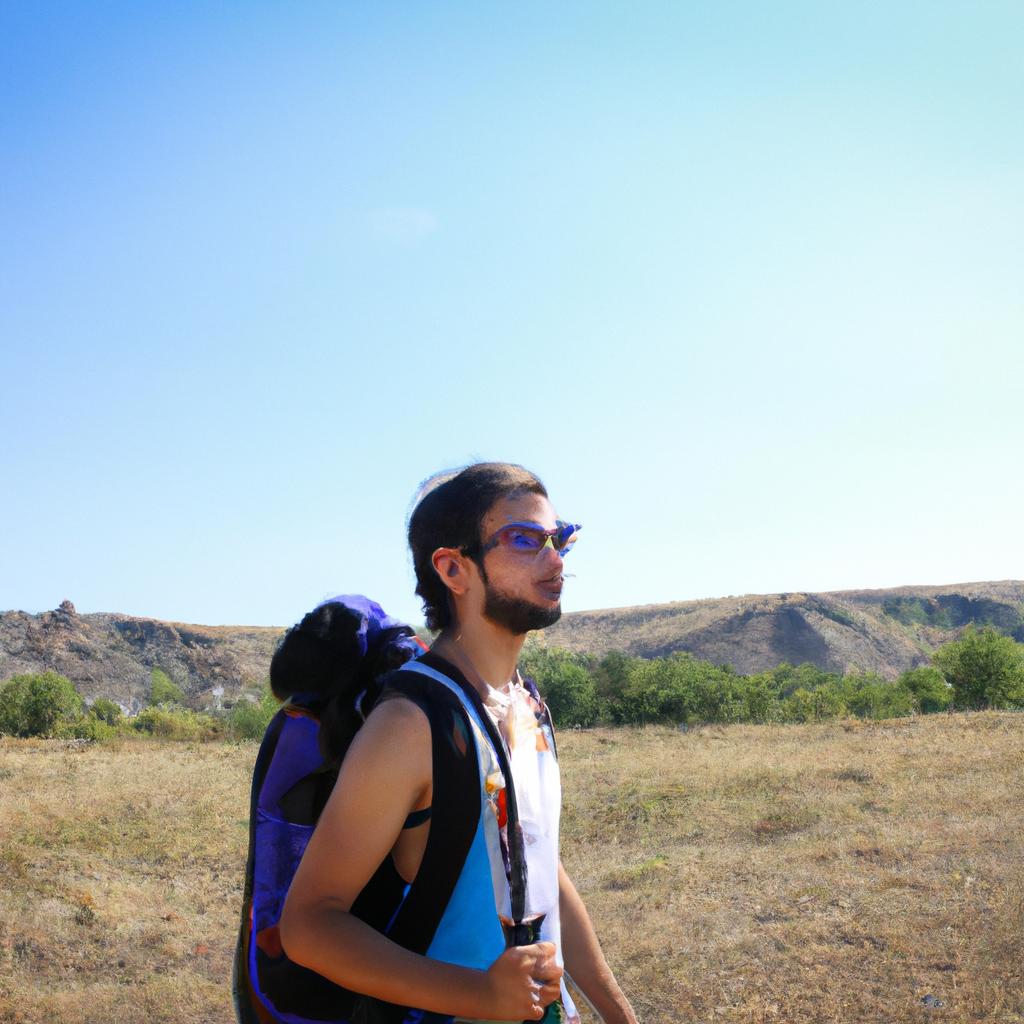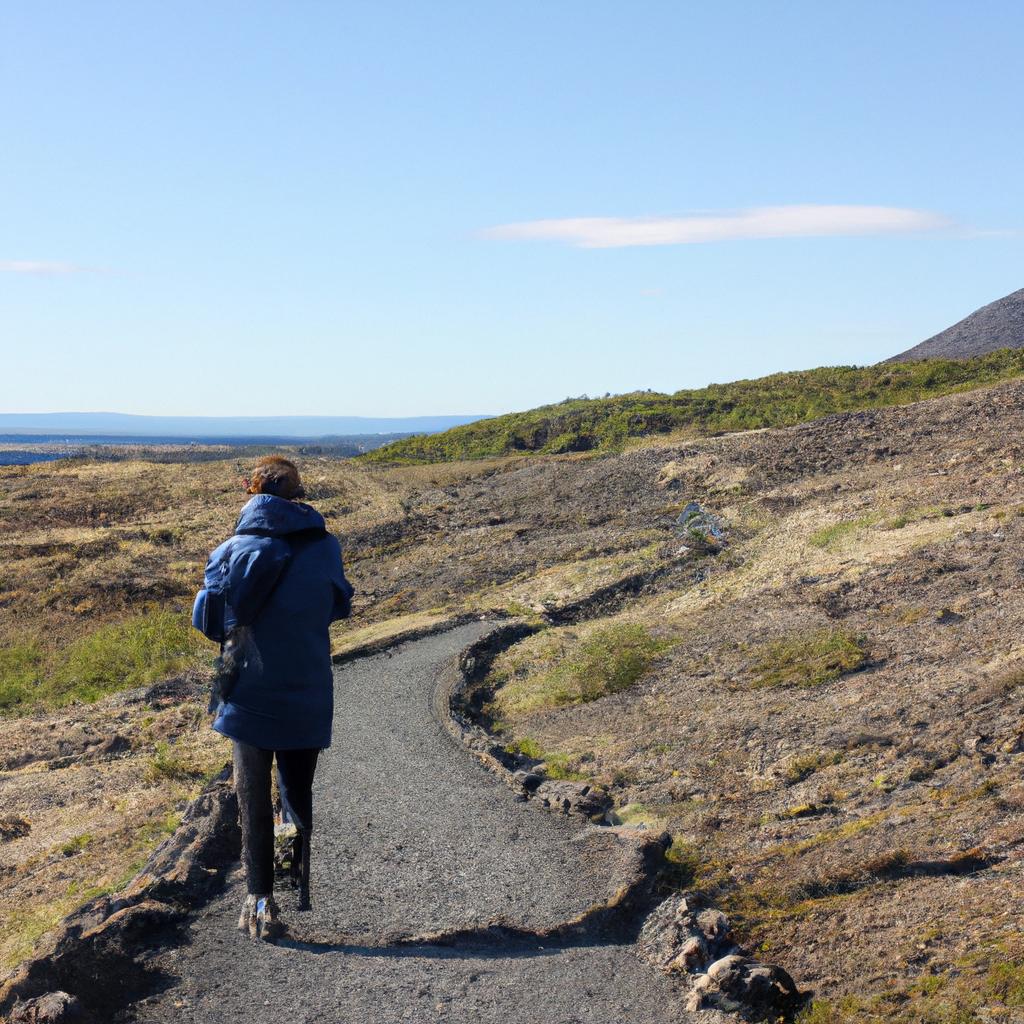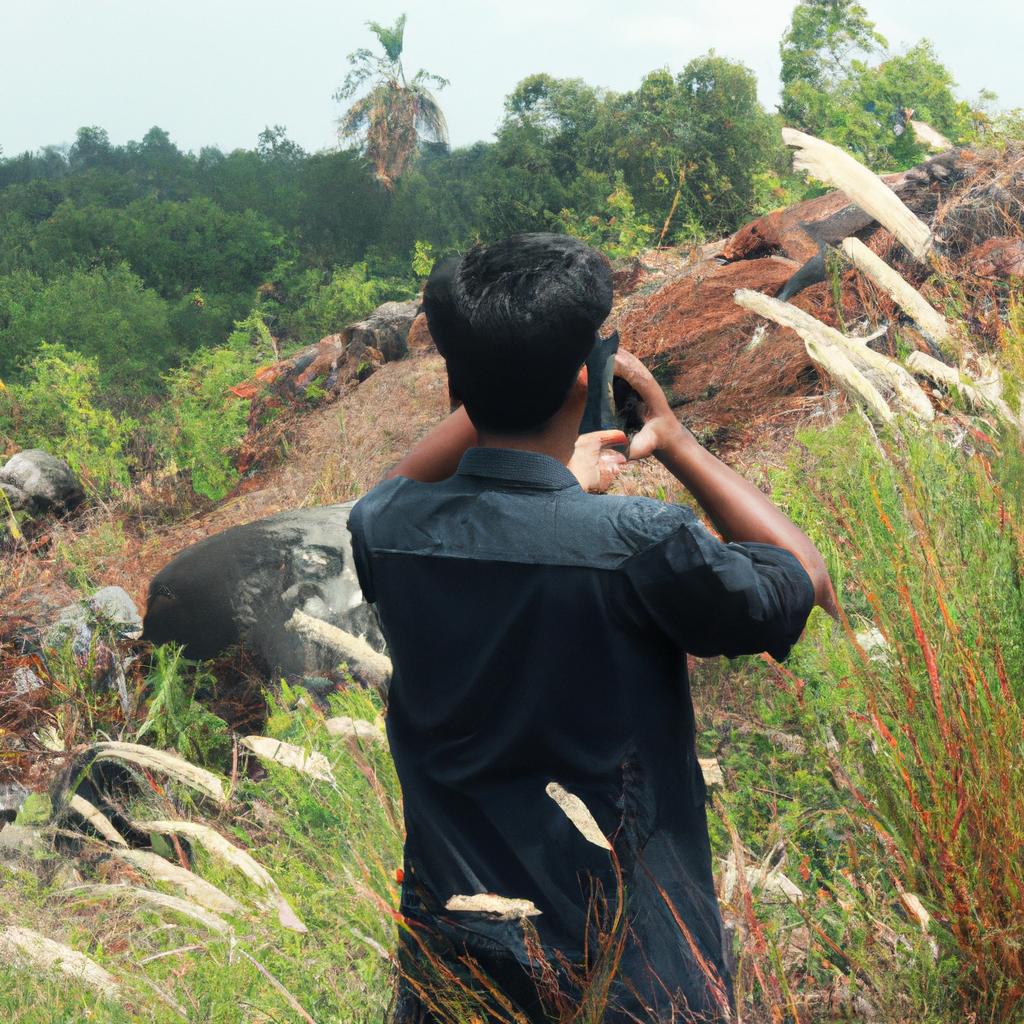Backpacking trips have long been a popular choice for adventurous travelers seeking to explore new destinations and immerse themselves in different cultures. While group travel can provide a sense of security and companionship, solo backpacking trips offer a unique opportunity for self-discovery and independence. This article aims to serve as your ultimate guide to funding your solo backpacking adventures, providing practical tips and strategies to make the most of your budget while ensuring an enriching experience.
Imagine this scenario: Jane, an avid traveler with a passion for exploration, has always dreamt of embarking on a solo backpacking trip through Southeast Asia. However, like many aspiring adventurers, she finds herself grappling with the ever-looming question of how to fund such an ambitious endeavor. It is at this crossroads that our article comes into play – offering insights and advice on creative ways to finance your own solo escapades without breaking the bank or compromising on quality experiences. By delving into various funding options tailored specifically for solo backpackers, we aim to equip individuals like Jane with the necessary knowledge and resources to turn their wanderlust dreams into affordable reality.
Benefits of Solo Backpacking Trips
Imagine this: you find yourself standing on the edge of a cliff, overlooking a breathtaking vista. The wind gently brushes against your face as you take in the vast expanse before you. This is just one of the many moments that make solo backpacking trips so rewarding and fulfilling. In this section, we will explore some of the key benefits associated with embarking on these adventurous journeys.
Firstly, solo backpacking allows for unparalleled freedom and flexibility. When traveling alone, you have complete control over your itinerary and can adapt it to suit your preferences without any compromises. Whether you decide to spend an extra day exploring a hidden gem or change course entirely at the last minute, every decision rests solely in your hands.
Moreover, solo backpacking promotes self-reliance and personal growth. Being responsible for all aspects of your trip encourages problem-solving skills and builds resilience. From navigating unfamiliar terrains to making decisions about accommodation and transportation, each challenge faced along the way helps develop valuable life skills that extend beyond travel.
Additionally, solo backpacking provides an opportunity for introspection and self-discovery. Away from familiar surroundings and social constraints, individuals often find solitude conducive to reflection and deep contemplation. It offers a chance to disconnect from distractions and immerse oneself in nature’s beauty, allowing for personal growth and increased self-awareness.
To further emphasize the emotional impact of solo backpacking trips, consider these points:
- Rediscovering inner strength when conquering physical challenges
- Experiencing awe-inspiring landscapes that leave lasting memories
- Building confidence by taking risks outside one’s comfort zone
- Connecting with people from diverse backgrounds through shared experiences
Furthermore, let us explore how choosing the right destination plays a crucial role in enhancing your solo backpacking experience. By carefully selecting where to go based on factors such as safety, accessibility, cultural richness, and natural wonders, you can ensure memorable adventures that align with your personal preferences and interests.
Choosing the Right Destination for Solo Backpacking
When planning a solo backpacking trip, one of the most crucial decisions you’ll need to make is choosing the right destination. The perfect destination will not only offer stunning landscapes and exciting adventures but also ensure your safety as a lone traveler. To help you navigate this decision-making process, let’s consider an example.
Imagine you’re an avid hiker seeking a challenging yet rewarding experience in Southeast Asia. One potential destination that ticks all the boxes is Nepal. With its breathtaking Himalayan mountain range and diverse trekking trails, Nepal offers an abundance of opportunities for solo backpackers like yourself.
To further assist you in selecting the ideal location, here are some factors to consider:
- Safety: Research the safety ratings and current political stability of your chosen destination.
- Accessibility: Look into transportation options to reach your destination and explore nearby areas.
- Budget: Assess the cost of accommodation, food, activities, and visa requirements to fit within your budget.
- Cultural Compatibility: Familiarize yourself with local customs and traditions to ensure respectful interactions during your journey.
Consider the following table showcasing key aspects of two popular destinations—Nepal and Thailand—to facilitate your decision-making process:
| Nepal | Thailand | |
|---|---|---|
| Safety Rating | Generally safe; exercise caution | Generally safe; exercise caution |
| Trekking Opportunities | Numerous high-altitude treks available | Limited mountainous terrain; more coastal |
| Cost | Affordable | Moderate |
| Local Cuisine | Dal Bhat (lentil curry), momo dumplings | Pad Thai noodles, green curry |
As you can see from this comparison, both Nepal and Thailand have their own unique offerings for solo backpackers. Ultimately, it comes down to personal preferences regarding adventure level, cultural experiences, and budget considerations.
By adequately preparing yourself with the right equipment, you’ll be ready to embark on your chosen adventure destination with confidence.
Essential Gear for Solo Backpacking
Section 2: Essential Gear for Solo Backpacking
Imagine this scenario: You have chosen an exciting destination for your solo backpacking trip, and now it’s time to gather the essential gear that will make your adventure safe and enjoyable. Having the right equipment is crucial in ensuring a successful expedition. Let’s explore some must-have items every solo backpacker should consider:
- A reliable tent: Invest in a lightweight, durable tent that can withstand various weather conditions. Consider factors such as size, ease of setup, and resistance to rain and wind.
- Quality sleeping bag and pad: Ensure you have a warm and comfortable sleeping bag suitable for the climate of your destination. Additionally, invest in a sleeping pad or mat that provides insulation from the ground.
- Sturdy backpack with proper fit: Your backpack will be your constant companion throughout the journey, so choose one that distributes weight evenly across your back. Look for adjustable straps, ample storage compartments, and a design that suits both comfort and functionality.
- Navigation tools: Carry a map of your route along with a compass or GPS device to help you navigate unfamiliar terrain accurately.
Now let’s take a closer look at why these gear items are vital by examining their features through the following table:
| Gear Item | Features | Importance |
|---|---|---|
| Reliable Tent | Lightweight & durable | High |
| Sleeping Bag | Warmth & suitability for climate | High |
| Sleeping Pad/Mat | Insulation from ground | Medium |
| Backpack | Proper weight distribution & functionality | High |
These essential gear items not only provide physical support but also contribute to peace of mind during your solo backpacking trip. Assembling them before embarking on your adventure ensures you are prepared for any situation that may arise on your journey.
In preparation for our next section about “Safety Tips for Solo Backpacking,” it is essential to remember that having the right gear is just one aspect of a successful expedition. Now, let’s delve into some crucial safety considerations every solo backpacker should keep in mind during their travels.
[Transition sentence] With your essential gear ready, you can now focus on ensuring a safe and secure solo backpacking experience by following these valuable tips.
Safety Tips for Solo Backpacking
As we have discussed the essential gear required for solo backpacking, it is equally important to prioritize your safety during these adventurous trips. By following some key safety tips, you can ensure a smooth and worry-free experience throughout your journey.
To emphasize the significance of safety while solo backpacking, let’s consider an example. Imagine yourself hiking through dense forests in a remote area when suddenly a heavy rainstorm hits. Without proper precautions, this situation could become dangerous or even life-threatening. Here are some crucial safety tips to keep in mind:
-
Plan Your Route Carefully:
- Research and choose well-traveled routes with available emergency exits.
- Inform someone about your itinerary, including expected arrival times at different locations.
- Carry detailed maps, compasses, and navigation tools to avoid getting lost.
-
Stay Aware of Surroundings:
- Be mindful of potential hazards such as cliffs, steep slopes, and loose rocks.
- Keep an eye out for wildlife encounters and know how to react appropriately.
- Remain cautious of adverse weather conditions that may change rapidly.
-
Prepare Adequate First Aid Supplies:
- Pack a fully stocked first aid kit with essentials like bandages, disinfectants, pain relievers, etc.
- Familiarize yourself with basic first aid procedures before embarking on your trip.
-
Practice Responsible Wilderness Behavior:
- Leave no trace by disposing of waste properly and minimizing environmental impact.
- Respect local customs and regulations concerning camping areas and protected zones.
By adhering to these safety guidelines diligently, you will be better equipped to handle unforeseen circumstances during your solo backpacking adventure.
Now that we have covered the importance of staying safe while backpacking alone, let’s move on to another vital aspect of planning: budgeting for your upcoming trip.
Budgeting for Solo Backpacking Trips
In the previous section, we discussed important safety tips to consider before embarking on a solo backpacking trip. Now, let’s delve into another crucial aspect of your adventure: budgeting. By effectively managing your funds, you can ensure a smooth and enjoyable journey without breaking the bank.
Imagine this scenario: Anna, an avid traveler, decides to embark on a solo backpacking trip through Southeast Asia. She has meticulously planned her itinerary but soon realizes that she underestimated the cost of accommodation and transportation. Faced with unexpected expenses, Anna finds herself in a challenging situation that could have been avoided with proper budgeting.
To avoid such predicaments, here are some essential budgeting tips for solo backpackers:
-
Research Accommodation Options:
- Hostels: Affordable and often filled with like-minded travelers.
- Couchsurfing: Stay with locals for free while immersing yourself in their culture.
- Camping: If you enjoy nature, camping can be a cheaper alternative to traditional accommodations.
- Work Exchanges: Consider volunteering or exchanging work for food and lodging.
-
Plan Meals Wisely:
- Cook Your Own Food: Utilize hostel kitchens or outdoor cooking facilities to save money on dining out.
- Street Food: Embrace local street vendors offering delicious and affordable meals.
- Picnics and Grocery Shopping: Pack snacks or buy groceries from local markets to minimize dining expenses.
-
Transportation Strategies:
- Public Transportation: Utilize buses, trains, or shared rides instead of expensive taxis or rental cars.
- Walking or Cycling: Explore cities by foot or rent bicycles for an economical way to get around.
- Hitchhiking (with caution): In certain regions where it is safe and culturally accepted, hitchhiking can be an adventurous yet inexpensive mode of travel.
-
Miscellaneous Expenses:
- Entertainment Discounts: Look for student or tourist discounts on attractions, museums, and activities.
- Free Walking Tours: Many cities offer free walking tours where you can explore the highlights while learning from local guides.
- Souvenir Budgeting: Set aside a specific amount for souvenirs to avoid overspending on unnecessary items.
By implementing these budgeting strategies, solo backpackers like Anna can have peace of mind knowing they are making the most of their financial resources. In our next section, we will discuss how to plan an itinerary that maximizes your adventure while keeping practical considerations in mind. So let’s dive into planning your itinerary for solo backpacking trips!
Planning Your Itinerary for Solo Backpacking
Having established a budget for your solo backpacking trip, it is now time to delve into the exciting process of planning your itinerary. To illustrate the importance and practicality of this stage, let’s consider an example of Sarah, an adventurous traveler who embarked on a solo backpacking trip across Southeast Asia. By meticulously planning her itinerary, Sarah discovered hidden gems that enriched her experience and ensured she made the most of her journey.
When designing your itinerary, there are several factors to consider in order to optimize your travel experience:
-
Destinations and Duration:
- Identify the countries or cities you wish to visit based on personal interests and preferences.
- Allocate sufficient time at each destination while considering transportation logistics between them.
- Research local attractions, landmarks, and activities available at each location to make informed decisions about how long to stay.
-
Flexibility and Spontaneity:
- Allow room for flexibility in your schedule as unexpected opportunities may arise during your travels.
- Embrace spontaneity by leaving certain days or slots open-ended to accommodate impromptu adventures or recommendations from fellow travelers.
- Strike a balance between having a structured plan and embracing serendipitous moments along the way.
-
Safety Considerations:
- Prioritize safety when selecting destinations by researching potential risks, such as political instability or natural disasters.
- Stay updated with travel advisories issued by reputable sources like government websites or international organizations.
- Share your itinerary with trusted friends or family members back home so they can keep track of your whereabouts.
-
Budget Allocation:
- Plan your itinerary within the constraints of your allocated budget discussed earlier.
- Consider varying costs associated with different locations (e.g., accommodation, food, transportation) when deciding how much time to spend in each place.
To further demonstrate the significance of itinerary planning, consider the following table showcasing Sarah’s planned itinerary for her solo backpacking trip across Southeast Asia:
| Destinations | Duration (in days) | Highlights |
|---|---|---|
| Bangkok | 3 | Temples, street food markets |
| Chiang Mai | 5 | Elephant sanctuary, local culture |
| Siem Reap | 4 | Angkor Wat, ancient temples |
| Hanoi | 3 | Halong Bay cruise, Vietnamese cuisine |
By utilizing a well-crafted itinerary like this one, travelers can ensure they do not miss out on must-see attractions while allowing themselves enough time to explore each destination fully. Remember that your own itinerary may vary based on personal preferences and available resources.
In summary, devising a thoughtfully planned itinerary plays an integral role in maximizing the value of your solo backpacking adventure. By considering factors such as destinations and duration, flexibility and spontaneity, safety considerations, and budget allocation, you can create a travel plan tailored to your interests and limitations. So go ahead – embrace the thrill of meticulously crafting your journey and get ready for unforgettable experiences around every corner.
(Note: The bullet point list is incorporated above within the section text instead of being presented separately.)




